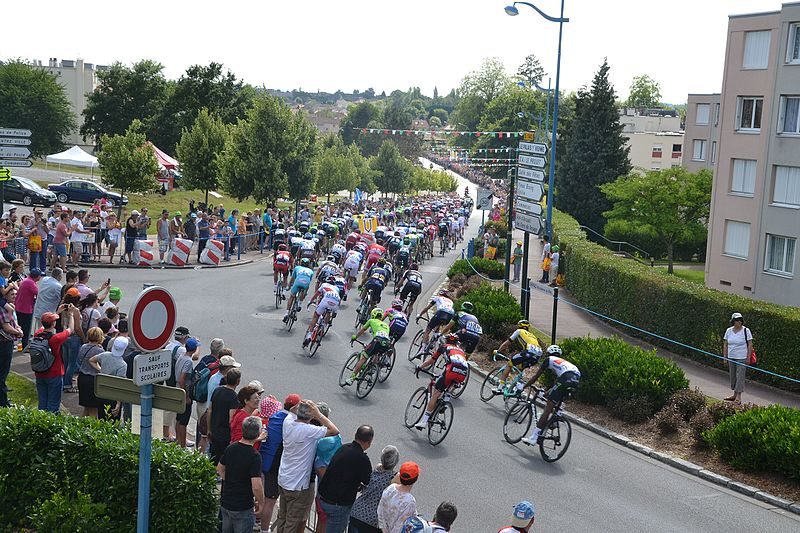The inside track: UoWTC on the force of Froome in France
He’s done it again. Chris Froome has made history by becoming the first Briton to win 3 Tour de France titles; an incredible achievement. But the 2016 Tour was no ordinary race. Froome didn’t just wait for the mountains and time trials to overcome his rivals – he surprised them with unexpected attacks which no one saw coming.
He initially faced tough competition from multiple Grand Tour winners Alberto Contador and Vincenzo Nibali. Two crashes in the opening stages scuppered Contador’s chances though, while Nibali lost time on the early climbs, clearly not back to his best after his recent win in the Giro d’Italia. Other rivals, including Fabio Aru and Richie Porte, also lost valuable time in the opening stages: Porte suffered a puncture in the closing kilometres of stage two and Aru failed to capitalise on his team’s efforts for his cause.
Froome’s surprise attacks helped him gain an initial advantage over his rivals and take the yellow jersey early on.
Nairo Quintana was thought to have the best chance of beating Froome this year. Quintana is a pure climber having grown up at high altitude in Columbia, so the mountains play to his strengths. He almost toppled Froome on the relentless climb of Alp d’Huez in the closing stages of the 2015 tour, when Froome faded in the final week. This year, however, the Colombian lost time to Froome on the climbs and his attacks were always short-lived.
Froome’s surprise attacks helped him gain an initial advantage over his rivals and take the yellow jersey early on. On the descent of the Col Peyresourde and in the closing kilometres of stage 11 where the peloton was torn apart by wind, Froome seized opportunities missed by all other General Classification contenders. Froome battled the elements to follow World Champion and eventual Points Jersey Classification winner Peter Sagan off the front of the disintegrating peloton. Sagan went on to win the stage and extend his lead in the Points Classification, which rewards consistently high stage finishes. Meanwhile, Froome increased his lead over his rivals once again.
The Mont Ventoux stage will be talked about for years to come.
Once Froome had the yellow jersey, everyone else was left to play catch up. Except they didn’t…
The Mont Ventoux stage will be talked about for years to come due to the sheer drama. As the leading General Classification riders attacked, a television motorbike suddenly stopped in front of them; causing a crash and irreparable damage to Froome’s bike. The incident was blamed on the vast number of fans gathered on the roadside, leaving only a narrow gap for the riders and forcing the motorbike to stop. Without a ridable bike, Froome actually ran some distance up the mountain, waiting for his team car to catch up to give him a spare bike. It was an incredible sight and, soon after, Froome was given a neutral service bike – but one with the wrong pedals! He was unable to ride it to the finish and had to wait again for his own team bike. If the provisional results had stood Froome would have lost his lead and the yellow jersey, but the commissaries decided to take the times from the point of the crash.
Aside from Froome’s dominance, a talking point of British interest was Mark Cavendish’s performance. The sprinter won four stages and was ahead of Marcel Kittel, who has dominated the sprinting scene over recent years, before leaving the tour to focus on the Olympics. Furthermore, his stage one victory meant Cavendish wore the coveted yellow jersey for the first time in his career and his tally of 30 Tour de France stage wins is now second only to five-time champion Eddy Merckx. By the time the tour reached Paris on Sunday afternoon however, the focus was deservedly on Froome.

Comments